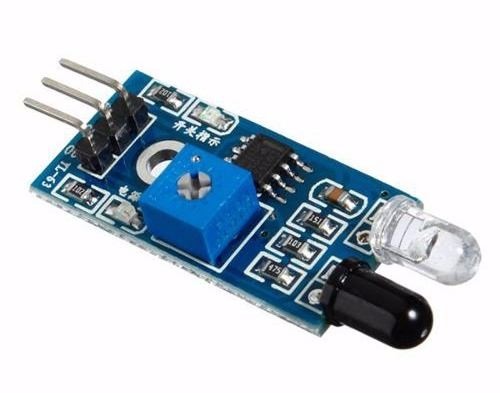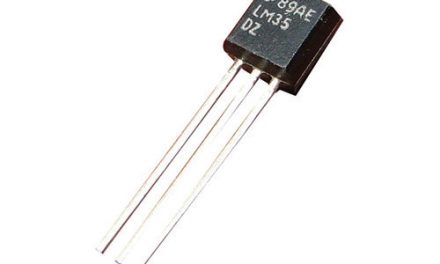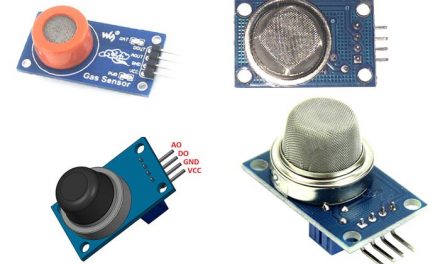Infrared. It is a term that may sound unfamiliar, but most people do not realize that they use devices which utilize Infrared i.e. IR sensor types on a daily basis. This article gives the types of IR sensors and their applications. IR sensor stands for Infrared sensor.
Table of Contents
What is an IR Sensor?
An infrared sensor / IR sensor is an electronic device that detects and measures infrared radiation in the surrounding environment. An IR sensor can also be defined as a light sensitive object with a spectral sensitivity in the infra red wavelength range of the electromagnetic spectrum.
Infrared, commonly referred to as infrared light is electromagnetic radiation with wavelengths longer than those of visible light. Infrared wavelengths extend from 700nm to 1mm in the electromagnetic spectrum. Most of the thermal radiation given out by objects that are near room temperature is infrared.
It is important to note that human eyes cannot detect differences in infrared energy because our eyes are primarily sensitive to visible light energy. This is light in the range 400 – 700nm in the electromagnetic spectrum.
There are different IR sensor types, but all of these are based on three basic laws.
Planck’s law of radiation
Every object that is at a temperature greater than the absolute temperature (0 Kelvins) emits radiation. Infrared radiant energy is determined by both the surface condition and temperature of the object.
Stephan Boltzmann law
This law used in all Infrared sensor types states that the total energy emitted at all wavelengths by a black body is related to the absolute temperature.
Wein’s Displacement law
This states that objects of different temperatures emit spectra that peak at different wavelengths. It provides the wavelength for maximal spectral radiant emittance for a given temperature.
The natural environment does not contain black bodies. Instead, it is comprised of selectively radiating bodies like water, rocks, and more.
Emissivity is defined as the ratio of the radiant emittance of an object to the radiant emittance of a black body at the same temperature.
The emissivity is dependent on the following:
- Object colour
- Surface roughness
- Moisture content
- Degree of compaction
- Field of view
- Viewing angle
- Wavelength
Infrared Detection System elements
These are the elements that are typically used in all the IR sensor types.
1. Infrared Source
Objects above the absolute temperature, 0K radiate infrared energy. This therefore classifies them as infrared sources.
Examples of these are: blackbody radiators, tungsten lamps, silicon carbide, Infrared lasers and Light Emitting Diodes of specific Infrared wavelengths.
2. Transmission Medium
Three main transmission medium are used, and these are the atmosphere, vacuum and optical fibres.
3. Optical Components
It is quite often that optical components need to converge or focus infrared radiations. This can be done to limit spectral response. To converge radiations, optical lenses are made of Quartz, Silicon, Germanium, polyethylene Fresnel lenses and mirrors made of Aluminium or a similar material are used. To limit spectral responses, band pass filters are used. Choppers are used to pass, or interrupt the IR beams.
4. Infrared Detectors
Specifications used in the detectors are: Photosensitivity, Noise Equivalent Power (DEP) and Detectivity (D*).
Parameters that are considered when choosing IR detectors for the various IR sensor types are: package, linearity, cooling mechanism, active area, temperature characteristics.
5. Signal Processing
Since the detector outputs from the various IR sensor types are usually very small, preamplifiers together with their associated circuitry are used to further process the signals received.
Types of IR Sensors
1. Active Infrared Sensors
These IR sensor types use both the Infrared source and Infrared Detectors. The Light Emitting Diode or laser diode illuminates the target, and reflected energy is then focused onto a detector. The common detectors are photodiodes, or phototransistors. The data measured is then processed through the use of various signal processing algorithms to extract the desired information.
2. Passive Infrared Sensors
These are IR sensor types that do not use any IR source. These are the main types of IR sensors. A passive infrared system does not give out any energy of its own for the purpose of detection. These systems detect energy emitted by objects in the field of view and may use signal processing algorithms to extract the desired information. Passive infrared systems can detect presence, occupancy and count.
Applications of IR sensors
1. Flame monitors
Flame monitors are types of IR sensors used for detecting the light emitted from the flames and to monitor how the flames are burning. They can monitor the stage in which the fire is currently in. Light emitted from the flames extends from UV to the IR region.
Examples include pyro electric detectors, two colour detectors, and solid state electronic detectors that use a photocell.
2. Remote sensing
All objects emit light. The measurement of each wavelength of the emitted light provides specific information about the object.
Examples of this include: monitoring land temperature, monitoring sea water temperature, monitoring gas concentration in the atmosphere, and monitoring of samples in a laboratory
3. Infrared Imaging Devices
This is one of the prime applications of IR waves.
Thermal infrared detectors are types of IR sensors used to measure the radiations emitted by objects such as water, rocks, and map the spatial temperature distributions of the object or area on an image.
Examples include thermal imagers, night vision devices, advanced smart phones, security surveillance cameras
4. Human body detection
IR devices can detect human bodies due to the fact that human tissue gives off IR radiation.
Examples of types of IR sensors that use this are the following: intrusion detection, security surveillance cameras, in airports to check for concealed packages, and in medical applications.
5. Gas analysers
These are IR sensor types that use the absorption characteristics of the gases in the IR region to measure the gas density. Two main types of methods are used:
a) Dispersive
In this case, the emitted light is spectroscopically divided and their absorption characteristics are used to analyse the sample quantity and gas ingredients.
b) Non dispersive
This uses absorption characteristics without dividing the emitted lights. They make use of optical band pass filters.
Dispersive analysers are used for carbonated drinks, and non-dispersive analysers are used in most commercial infrared instruments, automobile exhaust gases fuel leakages.
6. Device Control
Infrared is used to switch on and off televisions, home theatre systems, and radios. A television remote contains an infrared transmitter, and the device being controlled contains a receiver. Nowadays smartphones come with IR transmitters and can be used to control televisions.
Conclusion
This article gave an introduction to the concepts behind the Infrared technology. Examples were given to solidify the concepts introduced.
We hope you enjoyed the article.





